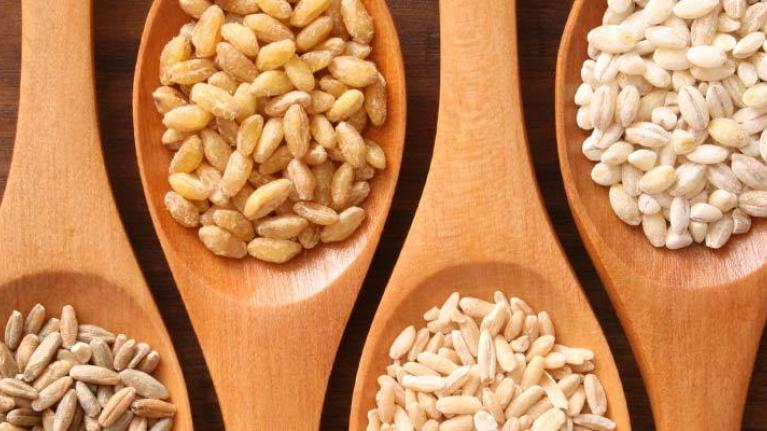
- Trends & Insights
- Nutrition, Health & Wellness
Going With The Grain
Healthy, wholesome grains have been around for millennia, but interest in them is sparking right now.
It’s not just because whole grains are healthy, with benefits that include reduced risk of stroke and heart disease. The food industry has responded by introducing new products that make grains more accessible, especially to young children, who may resist the color and texture of traditional whole-grain products.
Chefs have long known that whole-grain foods offer satisfying eating and creative menu interest, in addition to having a no-downside nutritional image. Polenta, for instance, has become so popular that it’s showing up on mainstream non-ethnic menus, and grains like quinoa and spelt have skipped the tracks from “health food” products to become signature ingredients.
Grains are wonderful, not only in bread and other baked goods, but in soups, salads, main courses, and side dishes.
Barley – This popular cereal grain is used in the production of both beer and whisky, but its hearty flavor and dense, nutty chew is also great in soups, stuffings, and casseroles, as well as breadstuffs.
Buckwheat – Also known as kasha, roasted hulled buckwheat groats are a staple of Eastern European cooking.
Bulghur and Cracked Wheat – A staple of the Middle East, these two similar grain products are made from wheat kernels that have been steamed, dried, and crushed. The best-known uses include tabbouleh and kibbe, but wheat also makes a tasty pilaf.
Cornmeal – Known as polenta in Italy, boiled cornmeal is the original peasant food gone upscale. It can be made from coarsely ground white or yellow meal, and can be served loose and creamy or formed into cakes. In the American South, the more finely milled grits are popular as a breakfast food but are also used in such regional specialties as shrimp and grits.
Couscous – Not strictly a grain, this rolled granular pasta is available in a variety of formats, including the larger Israeli couscous, and the toasted Sardinian pasta known as fregola. Couscous is also the name of a fragrant Moroccan stew made with vegetables and chickpeas and served over the pasta.
Farro – Newly trendy, farro is actually the original grain product, an ancient cereal that offers incredible chew in soups, pilafs, and a cheesecake-like ricotta tart known as farro pie. Often confused with spelt, the two are actually two separate strains.
Quinoa – Sometimes called the “mother of all grains,” this ancient crop was first harvested in the Andes. Pronounced keen-wah, it packs a powerhouse nutritional punch, as well as an intriguing, fluffy but seedlike texture and a subtle, nutty flavor.
Rice – You could write an entire book on this worldwide staple food, but some of the varieties that are drawing interest on menus today include Arborio and other Italian rices used in risotto; fragrant Indian basmati; jasmine rice, originally from Thailand; colorful exotics like black rice, forbidden rice, and Bhutanese red rice; and flavorful American specialty rices like wehani, texmati, and pecan rice. Each brings a distinctive flavor, texture, and appearance to foods.
Wheat Berries – These whole, unmilled wheat kernels can be baked into breads or used in salads and soups, where they add a distinctive crunchy texture.
Wild Rice – Not actually a rice but a grass, wild rice is a true luxury product, known for its nutty flavor and distinctive chew. It is now available cultivated, which has made the product more affordable.